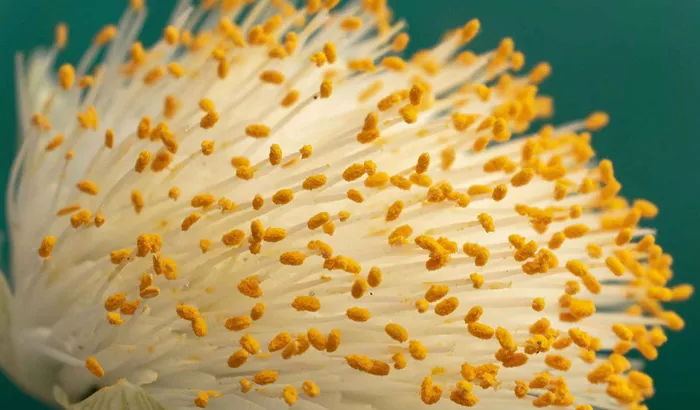Tiny fossilized pollen grains recently discovered in coastal sediments of Portugal have pushed back the known age of flowering plants, or angiosperms, to at least 123 million years ago—over 2 million years earlier than previously believed.
Measuring just 0.02 millimeters wide, these pollen grains were identified by their distinctive three-furrowed (tricolpate) pattern, a feature shared by around 70% of today’s flowering plants. The grains were preserved in Early Cretaceous sediments and detected using advanced laser scanning microscopy, which revealed their natural fluorescence.
Scientists believe these pollen grains originated from plants growing near ancient rivers. The pollen was likely washed downstream and out to sea, where it settled and fossilized. The age was confirmed through precise strontium isotope analysis of seashells found in the same sediment layer.
This discovery challenges the long-held idea that flowering plants first appeared in tropical regions, since Portugal was located in mid-latitudes during the Early Cretaceous. The rise of flowers dramatically changed Earth’s biodiversity, enabling new reproductive strategies and ecological relationships, especially with pollinating insects.
Although the exact ancestral plants that gave rise to angiosperms remain unknown, this evidence sheds light on the gradual emergence of flowers from obscurity to dominance in terrestrial ecosystems.
With their diverse colors, shapes, and scents, flowers evolved as key innovations to attract pollinators and protect seeds, driving rapid diversification and ecological success. This breakthrough helps resolve what Charles Darwin called the “abominable mystery” of how flowering plants appeared so suddenly in the fossil record, revealing that their origins are older and more complex than previously understood.


